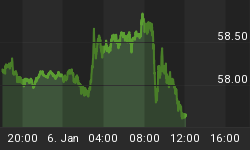Netflix may have been a bit of an earnings disappointment, and its stock may be on the decline despite a $1-billion infusion from a major hedge fund that took advantage of the dip–but as other earnings start to come out, this battlefield is getting messier.
Down over 35% YTD, Netflix (NASDAQ:NFLX) is experiencing some concerning growing pains.
Last week, it told shareholders that new competition “may be affecting our marginal growth”. That statement alone stripped 30% from the share price. It managed to bounce back some after that only because a huge hedge fund bought 3.1 million shares on the dip.
That hedge fund was Bill Ackman’s Pershing Square Capital, which noted at the time that when it comes to the growth in streaming and the decline in television, Netflix was a “primary beneficiary”. Pershing still sees future growth here–enough so that it will “widen” the company’s “powerful competitive moat”.
And while taken together, the competition is truly heating up and proving a thorn in the streaming giant’s side, separately, earnings and forecasts don’t look that great, either.
Take a look at Disney, for instance. Disney stock actually fell on the news that Netflix sees competition affecting its margins. Instead of benefiting from this, since DisneyPlus streaming is the competition, investors pulled back and punished the stock.
All of these streamers are spending astonishing amounts of money to create new and more content to attract more subscribers. That seemed to work up until recently. Subscriber growth seems to be slowing across the board, despite all the big spending on new content.
The investor rationale is that if Netflix is worried about subscribers, then DisneyPlus should be, too. After all, in the last earnings season, Disney stock took a hit because it only managed to add 2.1 million new subscribers instead of the 9 million Wall Street was expecting.
Disney is down 13% YTD.
Then we have Peacock, which is Comcast’s foray into the streaming war.
In reporting Q4 earnings, Comcast said that its Peacock streaming service generated $778 million in revenue for the full-year 2021, with an adjusted loss of $1.7 billion.
Due to content investment, which is expected to be double compared to the previous year, Comcast expects Peacock losses to total about $2.5 billion in 2022. Comcast spent about $1.5 billion on content for Peacock last year.
The three-year-old streaming service had nine million paid subscribers and another 7 million subscribers, via Comcast Xfinity and other distributors. In total, Comcast said that Peacock hit 24.5 million monthly active accounts in Q4.
At the same time, Comcast lost nearly 350,000 more pay-TV subscribers, bringing it to a total of 1.5 million residential video subscribers cutting their cable last year.
The growing consensus is that Netflix is wildly overvalued and that it will continue to lose market share to growing competition, not just from the likes of Disney and Peacock, but Amazon Prime, Apple, Discovery and a host of others. It’s still the clear leader, with 222 million subscribers.
The only question now is whether the massive spend on content is still going to bring in enough new subscribers, or if that spending spree is going to start killing margins. After all, there are only a limited number of subscribers in the world to win over.
All together, according to Ampere Analysis, via FierceVideo, over $220 billion was spent on content in 2021, representing a 14% increase over the previous year. Comcast, for one, plans to double its content spending on Peacock this year to $3 billion. Netflix spent over $5 billion in new content last year.

















